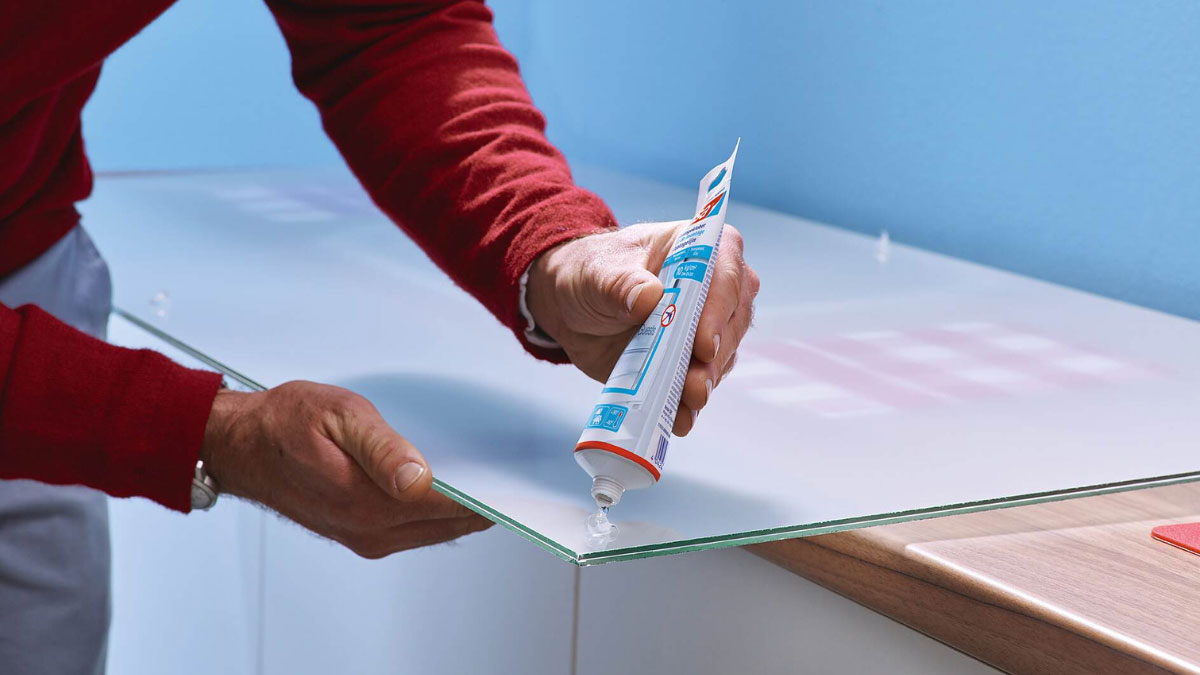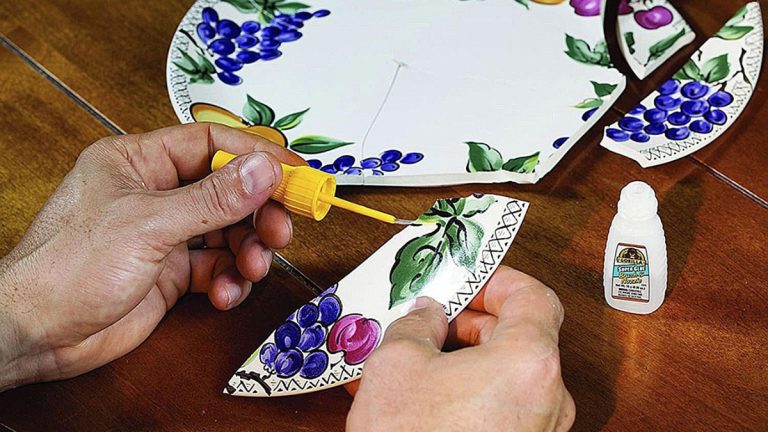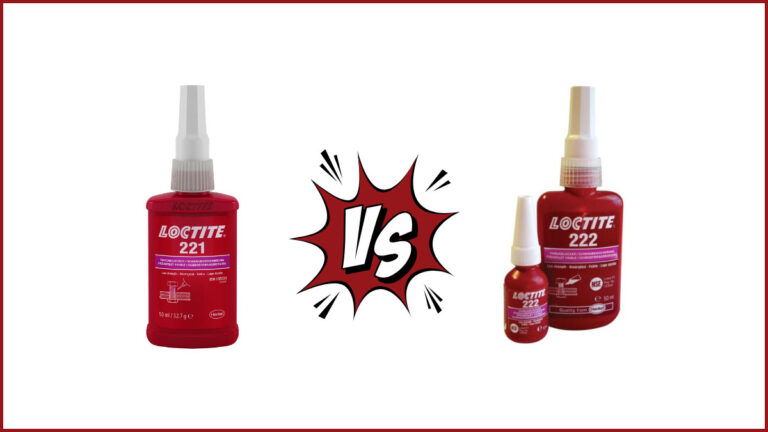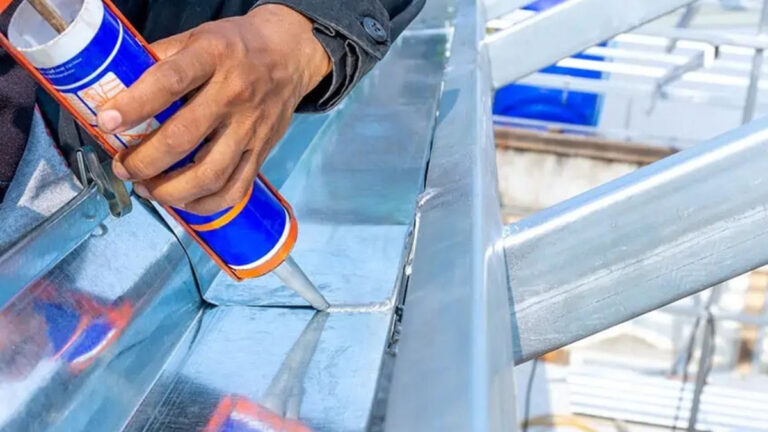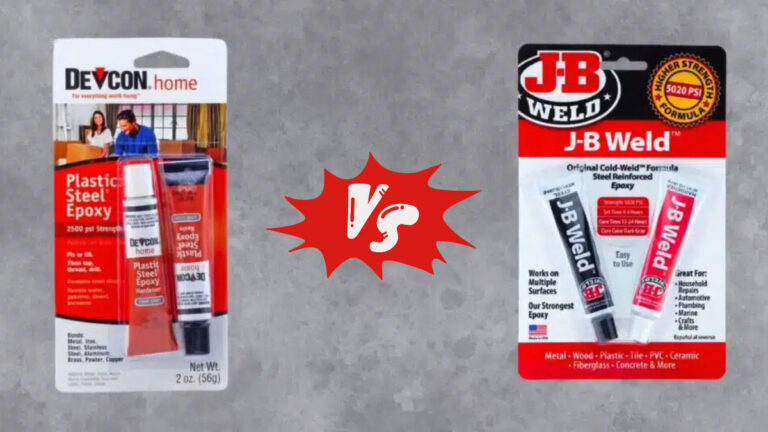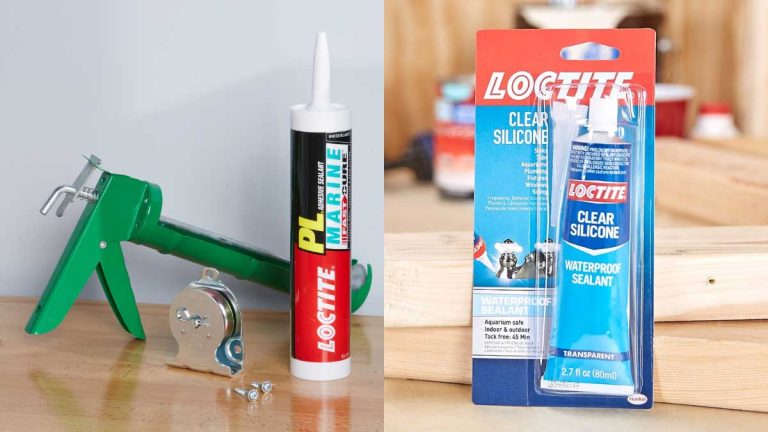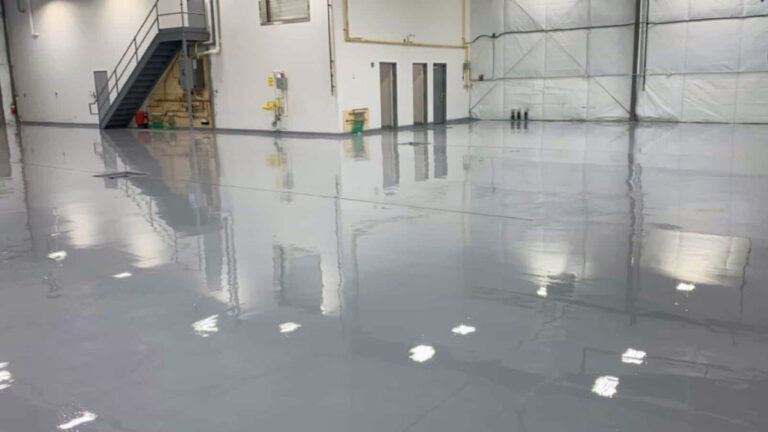Glue for Glass: Top Choices for Strong and Clear Bonds
When it comes to repairing or crafting with glass, finding the right adhesive can make all the difference. Whether you’re fixing a broken window, creating a stained glass masterpiece, or simply bonding glass to another material, choosing the right glue ensures a strong, lasting hold.
Exploring the world of glass adhesives can be tricky with so many options available. You need to consider factors like clarity, drying time, and strength to ensure your project turns out perfectly. In this guide, you’ll discover the best types of glue for glass and how to use them effectively.
Key Takeaways
- Choosing the right adhesive for glass is essential to ensure a strong, lasting bond. Key factors to consider include clarity, drying time, and bond strength.
- There are various types of glass adhesives available, each suited for different applications: UV glass adhesives, epoxy glass glue, structural acrylic glue, cyanoacrylate glue, and MS polymer glue.
- Proper surface preparation, including cleaning, roughening, and priming, is crucial for effective glass bonding to avoid contamination and improve adhesion.
- Different adhesives have varying curing and drying times; following the manufacturer’s instructions ensures the durability and strength of the bond.
- Safety precautions, such as working in a well-ventilated area and using protective gear, are vital when handling adhesives to avoid health hazards.
Types Of Glue For Glass
When it comes to gluing glass, choosing the right adhesive is crucial for a strong and durable bond.
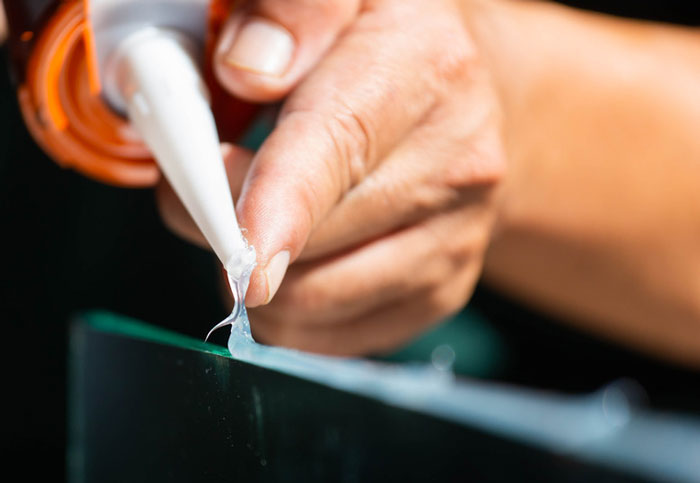
UV Glass Adhesives
Description: UV glass adhesives are single-part adhesives that cure when exposed to ultraviolet light. Known for their strong bonds, they are often used where clarity is important.
Usage: Ideal for transparent glass, you can cure these adhesives with a UV light or sunlight. They provide strong, element-resistant bonds.
Epoxy Glass Glue
Description: Epoxy adhesives consist of two parts that require mixing before application. They are highly effective for bonding glass to glass, glass to metal, and other non-porous surfaces.
Usage: Epoxy glues create strong bonds and are available in clear versions to avoid unsightly residue.
Structural Acrylic Glass Glue
Description: Structural acrylic adhesives are robust bonding agents designed for structural applications. They cure quickly and produce high-strength bonds.
Usage: Suitable for demanding applications where a tough bond is needed, such as in engineering or construction projects.
Cyanoacrylate Glass Glue
Description: Cyanoacrylate glues, also known as superglues, are fast-acting and versatile. They bond a variety of materials to glass, including plastics and metals.
Usage: Use these for quick fixes. They set in seconds, but ensure precise application to avoid brittle bonds.
MS Polymer Glass Glue
Description: Modified Silane (MS) polymer adhesives combine the flexibility of silicone and the strength of polyurethane. They are versatile and work well on various surfaces.
Usage: Ideal for both indoor and outdoor applications due to their excellent weather resistance and bonding strength.
| Adhesive Type | Bond Strength | Curing Method | Ideal For | Notes |
|---|---|---|---|---|
| UV Glass Adhesives | High | UV Light/Sunlight | Transparent Glass | Strong, clear bond, UV-curing required |
| Epoxy Glass Glue | Very High | Chemical Reaction | Glass to Glass, Glass to Metal | Clear versions available, strong and durable |
| Structural Acrylic Glue | Very High | Rapid Chemical Reaction | Structural Applications | Quick curing, high strength |
| Cyanoacrylate Glass Glue | Moderate to High | Rapid Air Cure | Quick Repairs | Instant bond, can be brittle if misapplied |
| MS Polymer Glass Glue | High | Moisture Cure | Various Surfaces | Weather resistant, flexible and strong |
Choose the right adhesive for your project to ensure the best results. Consider factors like bond strength, curing time, and application suitability.
Common Applications
Selecting the right adhesive for your glass projects ensures a durable, lasting bond. Different applications require specific types of glue to achieve optimal results. Below, you’ll find common applications for glass bonding and the recommended adhesives.
Glass to Metal Bonding
Bonding glass to metal requires adhesives with strong and durable bonds. The recommended adhesives for this application include:
Epoxy
- LePage Gel Epoxy: Bonds to metal, glass, ceramics, and wood. Sets in 5-6 minutes. Impact and weather-resistant.
- Permabond UV Curable Adhesives: Offer high strength, moisture resistance, and non-yellowing properties. Ideal for glass to metal bonding.
Super Glue
- Effective with properly prepared surfaces. Less preferred due to rapid drying and lack of waterproof properties.
Glass to Glass Bonding
When bonding glass to glass, clarity and strength are crucial. The recommended adhesives for this application include:
Silicone Adhesive
- GE Silicone II: Flexible and transparent. Resistant to weathering. Suitable for indoor and outdoor uses.
UV Adhesive
- Loctite Glass Glue: UV-curable. Forms clear and strong bonds. Ideal for glass-to-glass contact where appearance matters.
Glass to Wood Bonding
For glass to wood bonding, choosing the right adhesive ensures a strong and aesthetic bond. The recommended adhesives for this application include:
Epoxy
- Gorilla Epoxy: Versatile. Bonds glass to wood effectively. Sets in 5 minutes. Water-resistant.
Polyurethane
- Loctite PL Premium: Strong moisture and temperature resistance. Effective for mixed-material projects.
Glass to Acrylic Bonding
Bonding glass to acrylic requires adhesives that provide both clarity and strength. The recommended adhesives for this application include:
Acrylic Adhesive
- Weld-On 4: Forms clear and durable bonds. Ideal for glass and acrylic surfaces.
- Loctite Super Glue Gel: Provides strong, clear bonds. Suitable for mixed materials.
| Adhesive Type | Examples | Setting Time | Properties | Applications |
|---|---|---|---|---|
| Epoxy | LePage Gel Epoxy, Gorilla Epoxy | 5-6 minutes | Impact, weather-resistant, strong bonds | Glass to metal, glass to wood |
| UV Curable Adhesive | Permabond, Loctite Glass Glue | UV light required | High strength, moisture-resistant | Glass to metal, glass to glass |
| Silicone Adhesive | GE Silicone II | Varies by product | Flexible, transparent, weather-resistant | Glass to glass |
| Super Glue | Loctite Super Glue Gel | Seconds | Strong, clear bonds, fast-drying | Glass to acrylic, mixed materials |
Ensure you select the right adhesive for your specific project to achieve the best results.
How To Use Glue For Glass
Using glue to bond glass requires specific techniques to ensure a secure and lasting connection. Follow these steps for optimal results.
Surface Preparation
Proper surface preparation is crucial for effective glass bonding. Take the following steps to prepare your glass surfaces:
- Cleanliness: Ensure the glass surfaces are free from dirt, oil, and other contaminants. Clean with a mild detergent and water; dry thoroughly with a lint-free cloth.
- Surface Roughening: For certain adhesives, lightly roughening the glass can improve adhesion. This step can be skipped if the adhesive does not require it.
- Priming: Some adhesives need a primer to enhance the bond. Follow the manufacturer’s instructions for any priming steps.
Application Techniques
Applying adhesive correctly ensures a strong bond. Consider these steps:
- Application of Adhesive: Apply a small amount of adhesive to one of the glass surfaces. The amount should be enough to cover the bonding area without excessive squeeze-out.
- Example Adhesive Amounts:
| Surface Area (sq. inches) | Adhesive Quantity (ml) |
|————————–|————————|
| 1 | 0.5 |
| 5 | 2.5 |
| 10 | 5.0 | - Alignment and Pressing: Carefully align the two glass pieces and press them firmly together. Adjustments should be minor to maintain the bond’s strength.
Curing And Drying Times
Different adhesives have varying curing and drying times. Refer to the table below for common adhesives and their respective times:
| Adhesive Type | Initial Setting Time | Full Cure Time |
|---|---|---|
| UV Glass Adhesives | 5-10 seconds | 24 hours |
| Epoxy Glass Glue | 5-10 minutes | 12-24 hours |
| Structural Acrylic Glue | 10-15 minutes | 24-48 hours |
| Cyanoacrylate Glass Glue | 10-20 seconds | 24 hours |
| MS Polymer Glass Glue | 1-2 hours | 24-48 hours |
Be sure to follow the manufacturer’s instructions to achieve the best results. Proper curing ensures the bond’s durability and strength.
By preparing the glass surface, applying the adhesive correctly, and allowing proper curing and drying times, you can create a strong and lasting bond for your glass projects.
Top Tips For Best Results
Achieving the best results with glass adhesives requires attention to detail and proper techniques. Below are key tips to guide you through selecting and using the right glue for glass projects.
Choosing The Right Glue
Selecting the correct adhesive is crucial to ensure a strong bond and long-lasting results.
Types of Glue:
- UV Glass Adhesives: These are ideal for bonding glass-to-glass. They offer strong bonds, resist moisture, and don’t yellow over time. They cure quickly under UV light or sunlight.
- Epoxy: Two-part epoxies are versatile, bonding glass to glass, metal, or other materials. They’re excellent for gap-filling and can be sanded after curing.
- Silicone Adhesives: Perfect for weatherproof bonds, flexible for exterior applications but can be a bit messy and prone to air bubbles.
- Cyanoacrylate (Super Glue): Less suitable for long-term glass bonding due to brittleness and potential bond failure over time.
Temperature And Humidity Considerations
Environmental conditions significantly impact adhesive performance.
- Temperature: Most adhesives perform best between 60°F and 80°F. Extreme temperatures might slow down or accelerate curing times improperly, leading to weak bonds.
- Humidity: High humidity can affect adhesive properties and curing times. For example, cyanoacrylate glues cure faster in high humidity, whereas excessive moisture can compromise other adhesives’ effectiveness.
Safety Precautions
Handling adhesives requires care to avoid accidents and health hazards.
- Work in a well-ventilated area: Adhesive fumes can be toxic.
- Wear protective gear: Use gloves, safety glasses, and masks to protect skin and eyes.
- Read manufacturer instructions: Follow guidelines for safe use, storage, and disposal.
Surface Preparation
Proper preparation ensures a stronger bond and a cleaner finish.
- Clean the Surface: Ensure the glass is free from dirt, oil, and moisture. Use a glass cleaner or rubbing alcohol for best results.
- Roughen Smooth Surfaces: Lightly sand smooth areas to improve adhesive grip.
- Dry the Glass: Ensure no moisture remains as it can weaken the adhesive bond.
Summary
By choosing the right glue, considering temperature and humidity, and taking necessary safety precautions, you can achieve optimal results in your glass projects. Proper surface preparation also plays a crucial role in ensuring a strong, lasting bond.
| Adhesive Type | Ideal For | Pros | Cons |
|---|---|---|---|
| UV Glass Adhesives | Glass-to-glass bonding | Strong, moisture-resistant | Requires UV light to cure |
| Epoxy | Glass, metal, others | Versatile, gap-filling | Longer curing time |
| Silicone Adhesives | Exterior applications | Flexible, weatherproof | Can be messy, air bubbles |
| Cyanoacrylate (Super Glue) | Quick fixes | Fast curing | Brittle, not long-lasting |
Use this guide to navigate the complexities of gluing glass effectively. Proper adhesive selection and cautious application ensure durable, clear results for all your glass projects.
Conclusion
Choosing the right glue for your glass projects ensures durability and clarity. Whether you’re bonding glass to metal, wood, or acrylic, understanding each adhesive’s properties is key. Proper surface preparation and following application guidelines will help you achieve strong, lasting bonds. Always consider environmental factors and prioritize safety when handling adhesives. By selecting the appropriate glue and adhering to best practices, you’ll achieve optimal results in your glass repair and crafting endeavors.
Frequently Asked Questions
What is the best adhesive for glass repair?
The best adhesive for glass repair depends on the application. UV glass adhesives, epoxy glass glue, structural acrylic glass glue, cyanoacrylate glass glue, and MS polymer glass glue are top choices. Each offers specific benefits like clarity, strength, and varying drying times.
Can I use super glue on glass?
Yes, you can use super glue like Loctite Super Glue Glass for bonding glass. It dries clear, providing an invisible bond. However, it’s best for small repairs and not always suitable for heavy-duty applications.
How should I prepare glass surfaces before gluing?
Proper surface preparation is crucial. Clean the glass thoroughly to remove dirt and grease, roughen the surface slightly to ensure better adhesion, and dry the surface completely. For some adhesives, priming might be necessary.
What type of glue should I use for glass to metal bonding?
LePage Gel Epoxy and Permabond UV Curable Adhesives are recommended for glass to metal bonding. They offer strong, durable bonds suitable for various applications.
Which glue is best for glass to wood bonding?
For glass to wood bonding, Gorilla Epoxy and Loctite PL Premium are highly effective. They provide strong, aesthetic bonds, perfect for various crafts and repair projects.
What are the curing times for glass adhesives?
Curing times vary based on the adhesive type. Always follow the manufacturer’s instructions. UV adhesives typically cure quickly under UV light, while epoxy and MS polymer adhesives may require several hours to fully cure.
How can I ensure a strong bond when using glass adhesive?
To ensure a strong bond, use the correct amount of adhesive, align and press the pieces together properly, and allow adequate curing time as specified by the manufacturer.
Are there any safety precautions for using glass adhesives?
Yes, always handle adhesives in well-ventilated areas, wear protective gear such as gloves and goggles, and avoid direct contact with skin. Follow all safety guidelines provided by the adhesive manufacturer.
Can I use clear nail polish or heavy-duty tape for temporary glass fixes?
Yes, clear nail polish or heavy-duty tape can provide temporary fixes for cracked glass. However, for a longer-term solution, using a suitable glass adhesive like an epoxy mixture is recommended.
What factors should I consider when choosing a glass adhesive?
Consider the type of project, bond strength required, clarity of the adhesive, drying and curing times, and any environmental factors like temperature and humidity that might affect the adhesive’s performance.

